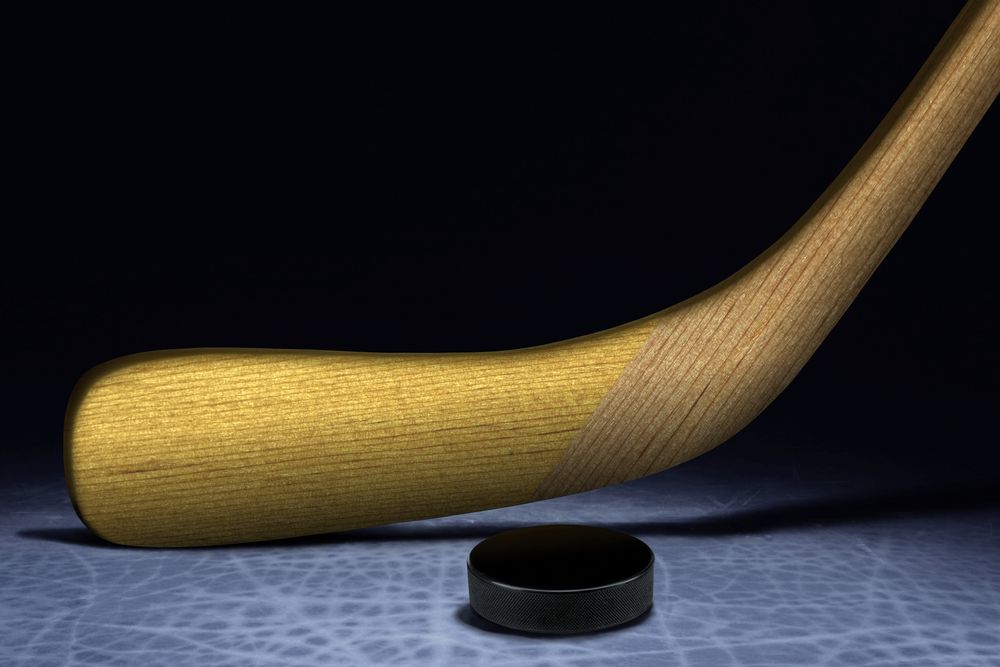We compare the characteristics and performance of ice hockey pucks and roller hockey pucks.
Like two distinct paths on the same journey, these pucks diverge in material, weight, and behavior on different surfaces.
Join us as we explore the intricate dance between these pucks, highlighting their unique properties and how they impact game play.
Whether you’re a fan of the fast-paced ice or the controlled finesse of roller hockey, we’ve got you covered.
Properties of Ice Hockey Puck and Roller Hockey Puck
The properties of an ice hockey puck and a roller hockey puck differ in material composition and physical characteristics.
Ice hockey pucks are made of vulcanized rubber, while roller hockey pucks are made of plastic. This difference in material affects their performance on the playing surface.
Ice hockey pucks are heavier and designed for gliding on ice, resulting in faster-paced games and the ability to be shot at high speeds. In contrast, roller hockey pucks are lighter and slide more easily on solid surfaces, requiring players to adjust their stickhandling and passing techniques.
Additionally, ice hockey pucks bounce less due to their weight and density, while roller hockey pucks bounce more due to their lighter weight and plastic material.
These performance differences have a significant impact on the game play of each respective sport. Ice hockey requires players to adapt to ice surface conditions, while roller hockey can be played on non-ice surfaces, allowing for a more controlled and technical style of play.
Performance Differences Between the Pucks
Moving on to the performance differences between the ice hockey puck and the roller hockey puck, it is important to note that ice hockey pucks move quickly on ice due to reduced friction, whereas roller hockey pucks move slower on various surfaces due to increased friction.
The weight of the puck also affects its performance. Ice hockey pucks, weighing approximately 6 ounces, can be shot at high speeds, enabling powerful shots. On the other hand, roller hockey pucks, weighing approximately 4 ounces, cannot be shot as fast as ice hockey pucks.
Furthermore, the different properties of the pucks require players to adjust their stickhandling techniques. Ice hockey pucks allow for precise stickhandling and passing, while roller hockey pucks require players to adapt their techniques to the puck’s lighter weight and increased friction.
Considerations for Different Playing Surfaces
When playing with ice hockey pucks or roller hockey pucks, it is important to consider the specific characteristics of the playing surface. Here are some key considerations for different playing surfaces:
- Ice Surface:
- Players need to adjust their stickhandling techniques to account for the smoothness and speed of the ice.
- The game play is faster-paced, requiring players to skate with speed and agility.
- The harder ice hockey puck allows for more physicality in the game.
- Non-Ice Surfaces:
- Roller hockey pucks are suitable for playing on non-ice surfaces such as concrete or sport court.
- Players need to adapt their stickhandling techniques to the increased friction on solid surfaces.
- Roller hockey enables a more controlled and technical style of play.
Considering these differences in game play and adjusting stickhandling techniques according to the playing surface is crucial for players to excel in both ice hockey and roller hockey.
Other Types of Pucks Used in Hockey
In addition to ice hockey pucks and roller hockey pucks, there are several other types of pucks used in hockey.
One such type is the hand and wrist strengthening puck, which is commonly used for off-ice training. These pucks are usually orange in color and are weighted to help players improve their hand and wrist strength.
Another type of puck used in hockey is the off-ice training aid, such as the Green Biscuit puck. These pucks are designed specifically for off-ice practice and are not suitable for roller hockey. They are used to enhance passing and shooting skills.
Impact on Game Play: Ice Hockey Vs Roller Hockey
The impact on game play between ice hockey and roller hockey can be seen in the differences in the two sports’ respective pucks. The properties of the pucks have a significant impact on the gameplay experience.
Here are the advantages of the roller hockey puck and the impact of puck properties on gameplay:
- Lightweight: Roller hockey pucks are lighter compared to ice hockey pucks, allowing for faster stickhandling and quicker shots on solid surfaces.
- Enhanced Control: The lighter weight and plastic material of roller hockey pucks require players to adjust their stickhandling and passing techniques, promoting a more controlled and technical style of play.
- Versatility: Roller hockey pucks can be used on non-ice surfaces, allowing for games to be played in various locations, not limited to ice rinks.
These advantages contribute to a different style of play in roller hockey, emphasizing agility, precision, and adaptability to different playing surfaces.
Cost Comparison of Ice Hockey Pucks and Roller Hockey Pucks
Costs associated with ice hockey pucks and roller hockey pucks differ significantly, impacting the affordability of these essential equipment items in their respective sports.
Ice hockey pucks are generally more affordable, costing around $2, while roller hockey pucks can cost upwards of $7. The cost difference can be attributed to the materials used in their construction, with ice hockey pucks made of vulcanized rubber and roller hockey pucks made of plastic.
The impact on game play is twofold. Firstly, the cost difference may affect the accessibility of the sport, as the higher cost of roller hockey pucks may deter some potential players.
Secondly, the different properties of the pucks, such as weight and material, can affect the game play experience. Ice hockey pucks enable faster-paced games, while roller hockey pucks suit a more controlled and technical style of play.
Pucks in Other Sports
There are several sports that utilize pucks, including shuffleboard, box hockey, air hockey, and novuss.
- Pucks in shuffleboard: Shuffleboard is a game where players use cues to push weighted pucks across a smooth surface towards a scoring area. The pucks used in shuffleboard are typically made of plastic or metal and have a flat, disc-like shape. They are designed to slide smoothly on the surface and require skill and precision to accurately place them in the scoring area.
- Pucks in air hockey: Air hockey is a fast-paced game played on a table with a smooth playing surface and air jets that allow the puck to float. The pucks used in air hockey are usually made of plastic and have a round shape with a smooth bottom to facilitate easy gliding on the surface. The lightweight nature of the pucks allows for quick movements and swift gameplay.
Pucks play a crucial role in these sports, providing players with the necessary equipment to compete and enjoy the game. Whether it’s sliding pucks in shuffleboard or gliding pucks in air hockey, the design and properties of the pucks are tailored to enhance the gameplay experience.
Adjusting Skating Speed and Agility in Ice Hockey
When transitioning from discussing the usage of pucks in various sports, the next subtopic to explore is how ice hockey players adjust their skating speed and agility.
In ice hockey, speed and agility are crucial for players to excel in the game. Adjusting skating techniques allows them to maneuver quickly and effectively on the ice, enabling them to outmaneuver opponents and create scoring opportunities.
Speed allows players to accelerate quickly, chase down loose pucks, and break away from defenders. Agility, on the other hand, enables players to change direction rapidly, pivot, and navigate around opponents.
These skills are essential for players to maintain control of the puck, evade defenders, and make swift decisions on the ice. Therefore, ice hockey players continually work on improving their speed and agility through various training exercises and drills to enhance their performance and contribute to the success of their team.
Physicality in Ice Hockey Vs Technical Style in Roller Hockey
Ice hockey and roller hockey differ in their style of play, with ice hockey emphasizing physicality while roller hockey focuses on a more technical approach. Here are the key differences:
- Physicality vs Finesse:
- Ice hockey is known for its aggressive nature, with players engaging in physical contact such as body checks and fighting.
- Roller hockey, on the other hand, prioritizes finesse and skillful play, with players relying more on stickhandling, precision passing, and quick footwork.
- Surface Adaptation vs Versatility:
- Ice hockey players must adapt to the unique challenges of playing on ice, including adjusting their skating speed, balance, and agility.
- Roller hockey offers more versatility as it can be played on various surfaces, such as concrete or sport court, allowing players to focus on technical aspects of the game without the constraints of ice.
Versatility of Roller Hockey in Different Locations
Roller hockey’s versatility shines through in its ability to be played in a variety of locations, thanks to its adaptability to different surfaces.
Unlike ice hockey, which is confined to ice rinks, roller hockey can be played on various non-ice surfaces such as concrete, asphalt, and sport court. This flexibility allows players to enjoy the sport in parks, parking lots, or even on streets.
The roller hockey puck, made of plastic, is specifically designed to slide easily on solid surfaces, making it suitable for these non-ice locations. This adaptability not only expands the accessibility of the sport but also provides players with the opportunity to showcase their skills in different environments.
Roller hockey’s ability to adapt to non-ice surfaces is one of its key benefits, making it a versatile and enjoyable sport for players of all levels.
Frequently Asked Questions
What Are the Different Colors of Pucks Used in Hockey and What Are Their Specific Purposes?
Different types of pucks used in hockey include blue, orange, steel, green biscuit, and white pucks. They vary in weight, material, and purpose, such as training aids or for goalie practice.
Are There Any Other Sports Besides Ice Hockey and Roller Hockey That Use Pucks?
Yes, there are other sports besides ice hockey and roller hockey that use pucks. Some examples include shuffleboard, box hockey, air hockey, and novuss. These sports utilize variations in puck design for their specific gameplay.
How Do the Weight and Material of a Puck Affect Its Performance on Different Playing Surfaces?
The weight of a puck affects shot accuracy, with heavier pucks providing more stability. The material of a puck is important for puck handling, with rubber pucks offering better control on ice and plastic pucks sliding more easily on solid surfaces.
Can Ice Hockey Pucks Be Used for Roller Hockey and Vice Versa?
The use of ice hockey pucks in roller hockey and vice versa is not recommended due to differences in weight, material, and performance. Ice hockey pucks are heavier and designed for gliding on ice, while roller hockey pucks are lighter and slide more easily on solid surfaces. Additionally, players must adjust their stickhandling and passing techniques when using roller hockey pucks.
How Do Ice Hockey Players Need to Adjust Their Skating Speed and Agility Compared to Roller Hockey Players?
Ice hockey players need to adjust their skating speed and agility compared to roller hockey players. The faster pace and physicality of ice hockey require players to be more explosive and agile in their movements on the ice.
Conclusion
In conclusion, the comparison between ice hockey pucks and roller hockey pucks highlights the distinct properties, performance differences, and game play dynamics of these essential components in hockey.
The article explores how ice hockey pucks, with their heavier feel and reduced friction on ice, contribute to the fast-paced and physical nature of the sport.
On the other hand, roller hockey pucks, being lighter and sliding more easily on solid surfaces, lend themselves to a controlled and technical style of play.
Understanding these nuances is crucial for players and enthusiasts alike in order to maximize their performance and enjoyment in each respective sport.









